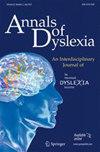Early akshara knowledge in beginner readers in Sinhala: a cross-sectional study
Abstract
A descriptive cross-sectional study was undertaken with Sinhala speaking students from grades 1 and 2 in the Gampaha District of Sri Lanka to determine how akshara graphical features influence emerging reading skills. A battery of locally validated assessments evaluated akshara knowledge (recognition and production), word reading (accurate and fluent), accurate sentence reading and visual perceptual skills. The study examined the graphic complexity of akshara by examining the number of disconnected components (DC), connected points (CP) and simple features (SF). This preliminary study explored how graphic complexity measures and visual perceptual skills correlated with akshara knowledge and how visual perceptual skills and akshara knowledge independently correlated with word and sentence reading abilities. Students from 27 schools participated. Out of the total 4847 students, 2447 (50.5%) were females and 2400 (49.5%) were from grade 1. Results demonstrated that 21 (0.43%) of students could neither recognise nor produce a single akshara, whilst 640 (13.2%) students could not recognise a single akshara with diacritics. It was the graphic complexity of the base akshara in addition to the diacritics added to it and the akshara production with long vowel sounds what students found most challenging. The study found that akshara without diacritic recognition and production was significantly associated with the number of CP and SF and visual perceptual skills, matching and sequencing significantly correlated with akshara with and without diacritic recognition and production for students in both grades. Furthermore, akshara with and without diacritics recognition and production together with visual perceptual skills matching and sequencing independently correlated with accurate word reading, fluent word reading and sentence reading abilities in binary logistic regression analysis. The important implication of this preliminary study is that it urges the field of early educators to consider the role of visual perceptual skills on early akshara learning when teaching akshara to beginner learners, whilst it is essential to further explore factors contributing towards akshara with diacritic knowledge in beginner Sinhala readers.


 求助内容:
求助内容: 应助结果提醒方式:
应助结果提醒方式:


